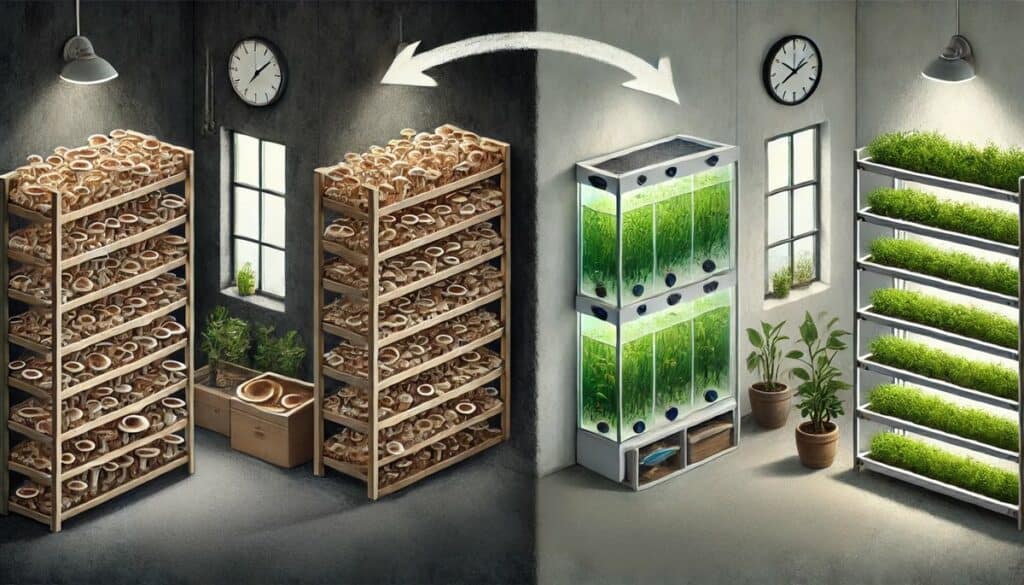Yes, you can grow mushrooms in an aquaponics system, but not directly like with leafy greens or other vegetables, but Incorporating mushrooms into an aquaponics setup can be an innovative and efficient way to diversify your crop production.
What is a mushroom?
I think it’s important to define and understand what a mushroom actually is before trying to implement it into an aquaponics, hydroponic or aeroponics system. The mushroom we see and harvest is only the flower or fruiting portions of the fungi; it’s responsible for producing and spreading spores.
Mushrooms grow in many different environments all over the world. They are maybe some of nature’s most essential creations, as they play a critical role in breaking down organic material and recycling nutrients back into the ecosystem.
Mushrooms have a very different needs than plants when it comes to most things really. They prefer darkness, damp, humid conditions with lot of dead matter to break down into nutrient, while plants wants easy nutrients, not too humid and lots of sunshine or artificial light. The other big difference is that while plants use photosynthesis and CO2 to grow and expel O2, the mushroom is more like us, using O2 while breaking down stuff and expel CO2. You might just had an aha-moment there, I know I did, more about that later..
Implementing Mushroom in your system
By adding mushrooms to your aquaponics(and other type) system, you can increase the diversity and productivity of your setup while potentially improving nutrient cycling and waste management. However, it’s important to research the specific requirements of the mushroom species you wish to grow and ensure that your system can accommodate their needs.
I’m sure there are benefits to adding some fungi to any system, such as improving it by breaking down dead stuff and bringing back some lost nutrients, but I doubt it would produce any edible mushrooms.
However;
I suggest not to put mushrooms directly into your aquaponics system, but rather having it as a separate growing space made for growing mushroom, the needs are just to different; Light vs low light, high humidity vs normal humidity, a more or less steril environment vs lots of bacteria.
Think of it this way, your plants would love some extra CO2 and expels O2, while the mushroom would love some extra O2 and expel CO2, so why not use fans to move air between the two rooms, giving plants some extra CO2, the mushrooms some extra O2 and you another product?

Your plants would grow quicker and I’m sure the mushrooms would not mind the extra O2 from the plant room. While the idea is sound in theory, some A-B experimentation needs to be done to see the actual results over time.
And then there are things like contamination and trying to not move all that humidity from the mushrooms to the AP system. Some sort of humidifier and dehumidifier might be needed to solve this problem, which sounds like a lot of extra equipment and cost compared to just using two separate rooms altogether.
Have you tried growing mushrooms, or in your aquaponics system? Tell me about it in a comment below!

